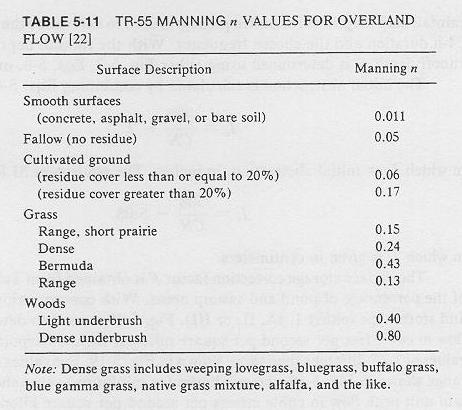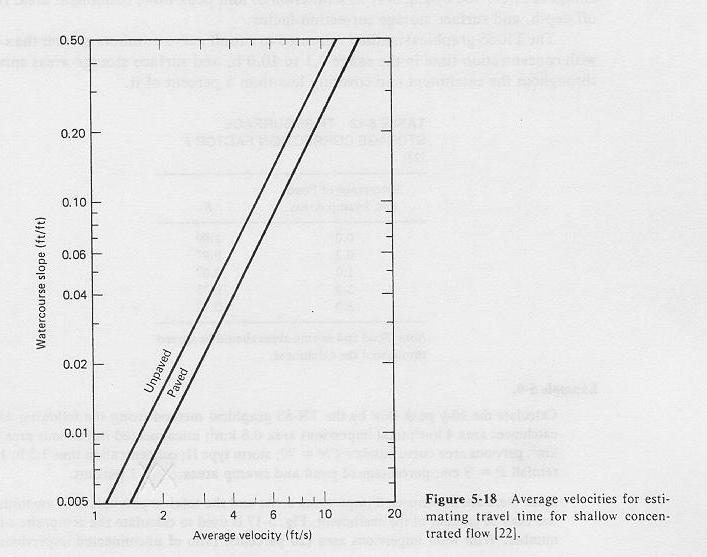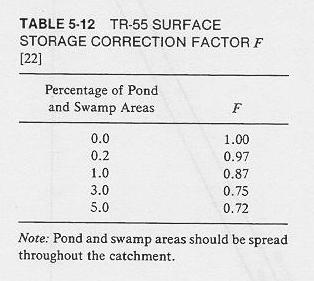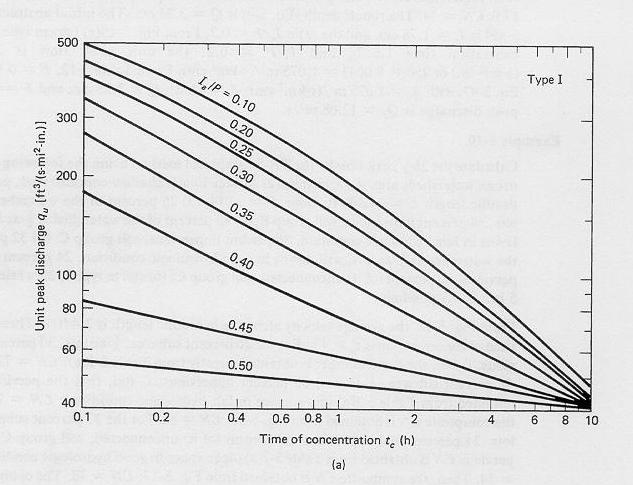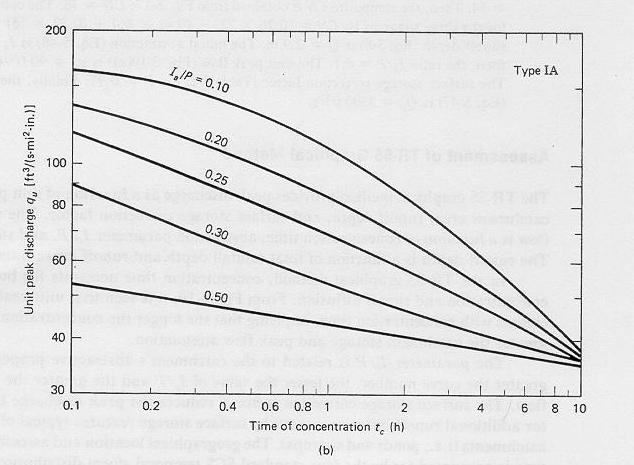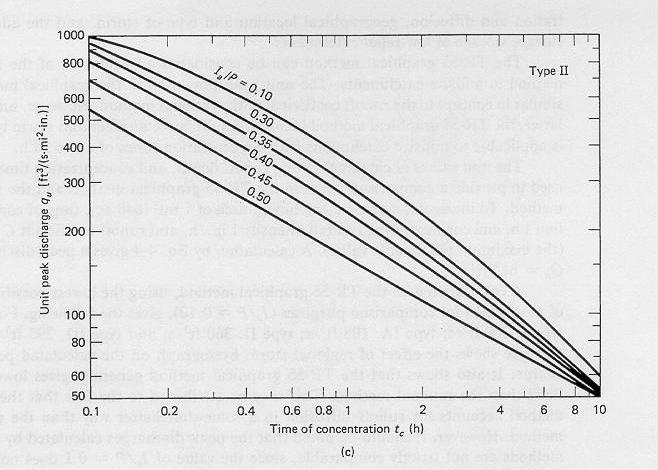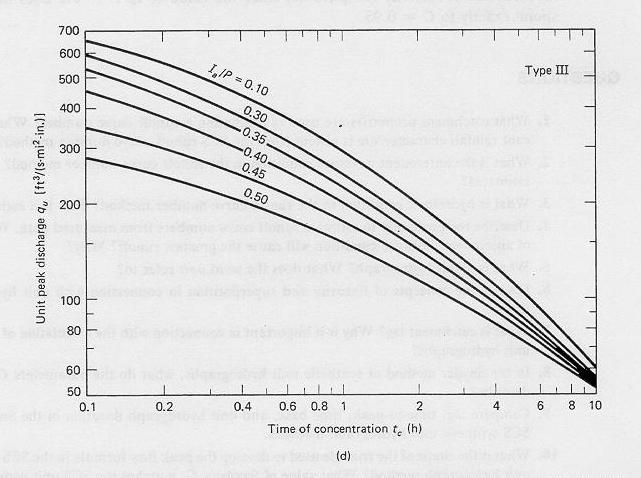|
|
CIVE 445 - ENGINEERING HYDROLOGY
CHAPTER 5C: HYDROLOGY OF MIDSIZE CATCHMENTS, TR-55 METHOD
|
- TR-55 is a collection of simplified procedures developed by the NRCS (ex SCS).
- It consists of two main procedures:
- graphical,
- tabular.
- The graphical method calculates peak flows, for catchments with time of concentration in the range 0.1-10 hr.
- The tabular method calculates flood hydrographs, for catchments with time of concentration in the range 0.1-2 hr.
- The graphical method is described here.
TR-55 storm, catchment, and runoff parameters
- Rainfall in TR-55 is described in terms of total rainfall depth and one of four type rainfall distributions: I, IA, II, and III.
- These type distributions are shown in Page 189.
- The location for these type distributions is shown in Page 190.
- The duration is 24 hr.
- This constant duration was selected because most rainfall data is reported on a 24-hr basis.
- Rainfall intensities corresponding to durations shorter than 24 hr are contained within the SCS distributions.
- For instance, if a 10-yr 24-hr rainfall is used, the 1-hr period with the most intense rainfall corresponds to the 10-yr 1-hr rainfall depth.
- TR-55 uses the CN method to abstract total rainfall.
- TR-55 is intended to be used for midsize basins, greater than 2.5 km2, with time of concentration up to 10 hours.
- Therefore, TR-55 includes procedures to determine the time of concentration for the following three types of surface flow:
- overland flow,
- shallow concentrated flow, and
- channel flow.
Selection of runoff curve number CN
- TR-55 defines two types of areas in urban catchments:
- pervious
- impervious
- Runoff curve numbers are calculated by areal weighing.
- Impervious areas are of two types:
- connected
- unconnected
- Connected impervious areas are those in which runoff flows directly into the drainage system,
or where runoff (from the impervious area) flows over a pervious area as shallow concentrated flow (as in a grass-lined swale).
- Unconnected impervious areas are those in which runoff (from the impervious area) flows over a pervious area (as overland flow) before it enters the
drainage system.
- Table 5-2(a) shows urban runoff curve numbers for different classes of pervious areas and connected impervious areas.
- Table 5-2(b),
Table 5-2(c), and
Table 5-2(d) show runoff curve numbers
for agricultural lands, forest, and semiarid rangelands, respectively.
- Figure 5-16 is used in lieu of Table 5-2 if the impervious area percentages or the pervious area
classes are other than those shown in the table (table shows only typical values).
- When the impervious areas are unconnected, Fig. 5-16 is used in cases where the total impervious area exceeds 30% of the catchment.
- Fig. 5-16 gives a composite CN as a function of percent imperviousness and pervious area CN.
- Figure 5-17 is used to determine the composite CN when all or portions of the impervious areas
are unconnected and the total impervious area is less than 30%.
- Fig. 5-17 gives a composite CN as a function of percent imperviousness, ratio of unconnected impervious area to total impervious area,
and pervious area CN.
Travel time and time of concentration
- For any reach or subreach, travel time is defined as the ratio of flow length to average flow velocity.
- At any given point in the catchment, the time of concentration is the sum of travel times through the upstream reaches.
- For overland flow, TR-55 uses the following formula for travel time:
|
tt = [0.007 (nL) 0.8] / [P2 0.5 S 0.4]
|
in which tt = travel time in hours, n = Manning's n, L = flow length in ft,
P2 = 2-yr 24-hr rainfall in inches, and S = average land slope, in ft/ft.
- In SI units, the travel time is:
|
tt = [0.0288 (nL) 0.8] / [P2 0.5 S 0.4]
|
in which L = flow length in m,
P2 = 2-yr 24-hr rainfall in cm, and S = average land slope, in m/m.
- Table 5-11 shows values of Manning's n applicable to overland flow.
|
